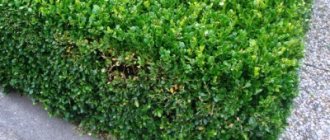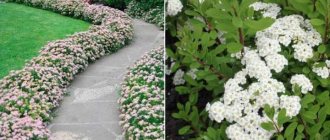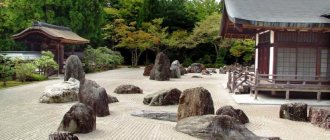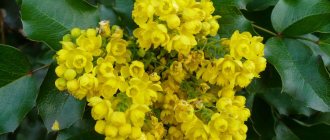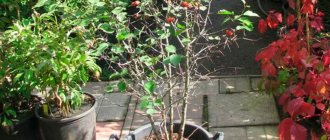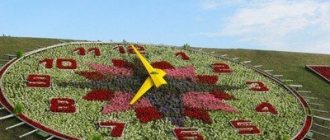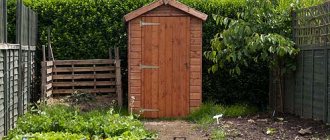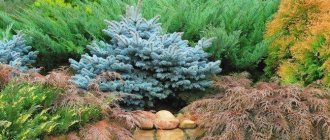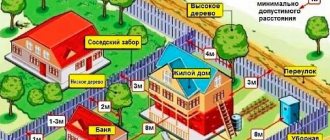A hedge in a flowerbed in the form of a labyrinth, as well as a thuja that acts as a high fence
Many amateur gardeners believe that a fast-growing hedge is an unattainable dream. However, this is not entirely true, since modern agricultural technologies make it possible to achieve the desired result in a short time. Many of them are very affordable and can be used in local climatic conditions.
When choosing a hedge for yourself, be prepared for the fact that it will bring not only benefits, but also a lot of time investment. The main one will be the painstaking work of pruning bushes. Some varieties will have to be pruned once every 2 weeks, or even every 10 days. The reason for this is the appearance of new shoots on the branches, which, as luck would have it, will grow in the most inappropriate and most noticeable places. Therefore, the main thing that a gardener will have to stock up on is patience!
| Name | Bloom time, flowers | Notes |
| Rose wrinkled | April-August, flowers white, pink, red | bright foliage in autumn, decorative non-falling fruits |
| Forsythia | April-May, yellow flowers | very bright flowering, before the leaves bloom |
| Barberry | June-July, yellow and pink | leaves of different colors in different varieties, very decorative in autumn |
| Hawthorn | June, white, pink, scarlet, terry forms available | decorative fruits and leaves in autumn |
| Decorative apple tree | May, white, pink | decorative bright red or yellow fruits |
| Lilac | May-June, white, blue, pink, purple, two-color flowers | has a strong and pleasant aroma |
| Kalina | May-June, white | there is a decorative form - buldenezh (large spherical inflorescences) |
| Japonica | May, orange, red | ornamental fruits, green foliage until late autumn |
| Irga | May, white, pink | lush flowering, bright foliage in autumn, beautiful and tasty berries |
Features of hedges
Green fencing is often used for summer cottages. It is a fence that consists only of real, living plants. It is completely environmentally friendly and performs the functionality of the same metal, plastic, wood, concrete, brick and other structures
Despite the fact that this type of fence seems simple in appearance, it serves its purpose well - it ideally protects the territory from unwanted visits, and also hides the territory from the prying eyes of neighbors and passers-by.
The difference from protective structures of various types is not only a violation of the local environmental situation, but also improves the quality of the territory. The increased number of plants helps to further filter the air, does not emit toxins, and many varieties also produce edible fruits.
Attention!
Some varieties have fruits that are used medicinally and are part of medicines.
Like any other structures, hedges have positive and negative properties.
The advantages of such a fence include:
- there is no need to perform additional finishing, the finished product does not require additional finishing: plastering, painting, cladding, etc.;
- excellent hiding of the disadvantages existing on the dacha plot, not only on the plot, but also on the constructed structures;
- attracting pollinating insects: thanks to this feature of the natural fence, the productivity of garden crops increases and the flowering of planted ornamental crops improves.
Types of hedges
To create a hedge yourself, you must first study the varieties of available forms, designs and crops that are suitable for this type of fencing. They are divided into groups according to different characteristics.
Height

Green fences can be classified by height. Hedge - dense green fences 0.6-4 m high and higher. Green spaces not exceeding 0.5 m are called borders.
If the height of a hedge is no more than 2 m, it is considered large. Fences of this type made from coniferous or deciduous trees can reach a height of 12-15 m. They are used as high barriers or windbreaks.
The most popular height of green hedges in our country is from 2.5 to 3.5 m. They provide protection to the boundaries of the site and can act as natural filters from dust, gas exhausts and various harmful emissions.
This is especially true for areas located along roads and railways. They also serve as protection for owners of summer cottages from unwanted attention from not-so-pleasant neighbors.
Inside the territory, you can make lower hedges, not exceeding 1.5 m, for example, to separate outbuildings from the recreation area. And fences with a height of 60-80 cm can be used to separate a children's playground, a secluded recreation area, or a flower garden.
Such a combination of crops differing in height and composition on the site will not only look beautiful, but will also create a festive atmosphere and a good mood.
Width

Hedges created independently by planting several rows of plants are less elegant and take up much more space. They are made along the boundaries of the site in areas with strong winds or high gas pollution in the surrounding areas. They will also protect against uninvited guests in areas with an unfavorable criminal situation.
Crops can be planted in 1, 2, 3 or more rows. Therefore, it is not surprising that the width will also change. Single-row hedges are planted in one line at an equal distance from each other. Such fences are the simplest. In them, you can only regulate the planting density, reducing or increasing the distance between crops in the row.
Double-row hedges consist of two rows of plants, three-row hedges consist of three, and so on. In multi-row hedges, tiered planting (planting into flower beds is carried out in tiers of different heights) or cascade planting (planting crops of different heights) is most often used. In them, plants are planted in a checkerboard pattern, taking into account the distances to the trunks of mature plantings.
Trellis can be installed along the outer and inner perimeters of multi-row hedges to support the outer rows, and the inner ones will rest securely on them.
Difficulty of care
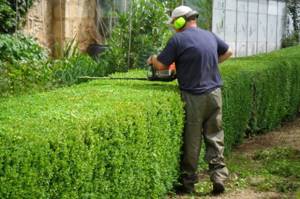
Hedges can grow freely or be artificially formed. The former grow as they please, creating the impression of naturalness and unity with the surrounding landscape.
Formed hedges require good and regular care. The plants in them should be flexible and easy to trim. You can create shaped fences from them.
It was as a result of curly cutting of hedges that topiary art arose (the formation of plants in the form of figures of animals, people, buildings, castles, cars, steamships, etc.), which is now popular among designers in Europe. .
By type of plants used
Hedges can be divided into: evergreen, flowering, deciduous, single-species (consisting of only one type of plant), mixed, trellis (formed from various vines intertwined) and combined (using some materials, for example, stone, wood , wicker structures, etc.).
Watch the video: How to plant a hedge
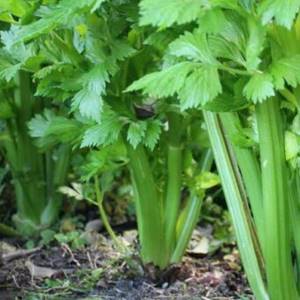
Why you should grow celery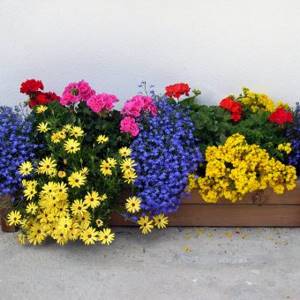
Flower seeds. How to choose?

Unpretentious shade-loving shrubs for the garden. 100 photos of low-growing shrubs that love shade
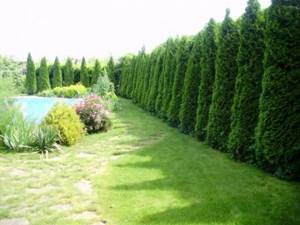
The next step is the pillars. They need to be placed at the beginning, end, and also in those places where bends are planned, if any. You can use metal and wooden poles. You need to dig them into the ground to a depth of 40-60 cm - this way they will be more stable.
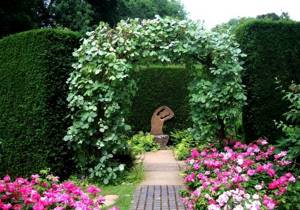
When the pillars are installed, you will need to stretch a fishing line or nylon rope between them. As a rule, the rope is stretched in several rows - 3 or 5. However, it is important to take into account the height of your hedge. See what the hedge looks like in the photo:
Which plants to choose
Different plants are used to create green spaces. We will consider the most popular crops below.
Dogwood
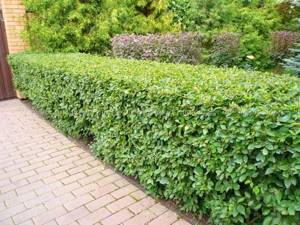
Shrubs for hedges, the height of which reaches 2-5 m. Abundant flowering occurs in March-April, then the leaves bloom and decorative fruits appear. The shrub is not afraid of shade.
Attention!
For planting a hedge, it is better to choose plants up to 2 years old.
Dogwood loves soil with neutral acidity and a well-drained site. Annual plants are characterized by slow growth, but by the next season the growth rate increases to 30 cm per year.
Bladderwort
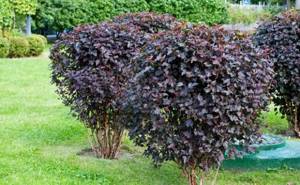
The leaves of this plant resemble viburnum leaves. Blooms in the first half of summer, resistant to winter and undemanding to care. It does not like stagnant water - the root system quickly rots. Suitable for forming a free or formed hedge. It can reach 4 m in height.
Dwarf shrubs for hedges do not exceed 1 m. On average, the bladderwort grows 40 cm per year. It retains its attractive appearance throughout the entire season.
Snowberry
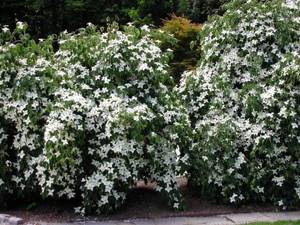
This fast-growing hedge shrub belongs to the honeysuckle genus. Undemanding to soil quality and watering. The annual growth is 30-35 cm. The height of the finished fence is 0.8-1.3 m.
Snowberry looks elegant thanks to the combination of bluish-green foliage with pink or white flowers. By August, unusual berries appear that look like snowballs. They remain on the fence in winter.
Thuja
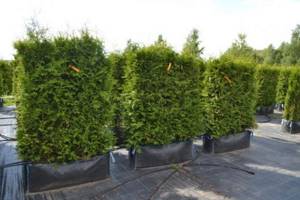
Evergreen, winter-hardy, long-lived plant. It has many varieties of different shapes - spherical, pyramidal, columnar, spreading, etc. The color palette is also quite wide - plants are bright green, dove-gray, bluish, yellow, and light green. The decorative effect of the thuja is given by the shape of the needles - it is carved.
The shrub is unpretentious, tolerates pruning well, and is used in garden design.
There are more than 100 varieties of thuja, but two are used for hedges: Brabant and Smaragd. The first has a cone-shaped crown, the bush reaches a height of 4 m. The annual growth of thuja is 25-30 cm.
Smaragd is less branched, grows 20 cm annually. It prefers well-lit areas; young plants need to be covered for the winter. To obtain a dense hedge, thuja is planted at a distance of 0.5-0.7 m.
Boxwood
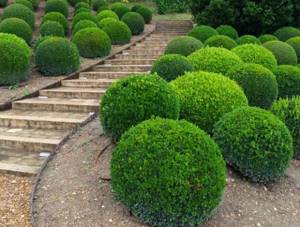
It is distinguished by its slow growth - no more than 15-20 cm per year, but summer residents choose it for its decorativeness and unpretentiousness. Boxwood produces a dense green hedge of regular geometric shape. Height – no more than 1 m.
The culture takes root quickly and is heat-loving. If the summer cottage is located in a cold region, the boxwood will grow small. In severe frosts, shelter will be required.
Juniper

Evergreen tree and shrub crop. Landscape designers prefer the second type, which grows quickly and also quickly recovers after pruning. The bush prefers shade and tolerates winter well. There is often no need to water it; it is unpretentious to the quality of the soil.
Attention!
To create a green fence, you need to choose cone-shaped varieties. Spreading bushes are suitable for decorating borders.
The annual growth is 20 cm, and the bush grows up to 1.5 m. Berries appear on crops older than two years. Planting should be done in a checkerboard pattern, leaving a distance of at least 60 cm between plants.
Spruce
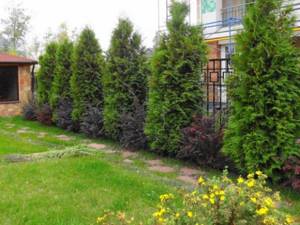
Evergreen trees that are frost-resistant and form impenetrable living walls. The first 10 years develop very slowly, but some varieties can live up to four hundred years. They require almost no care and can easily tolerate formation. There are also dwarf varieties for forming borders, which are distinguished by their spherical shape. The color of the needles can be from dark green to blue
When planting, trees should be placed at a distance of approximately 1 m from each other. When this distance is reduced, the wall will be very dense with tall plants. The fence will become impenetrable even for small animals. Spruce is chosen due to the fact that:
- most varieties tolerate gas pollution and poor environmental conditions in megacities;
- they tolerate haircuts well;
- the crown starts almost from the ground;
- the branches are almost never exposed;
- the hedge turns out to be dense and quite wide.
But the plant also has disadvantages. For example, it needs a lot of moisture. Does not like sunny areas, especially in the first years after planting, it is necessary to fertilize. The crown should be formed at the same level.
Kalmiya
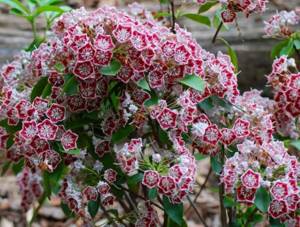
Lush evergreen plant with beautiful flowering. The annual growth is 25-30 cm. The bushes should be planted in partial shade, in loose soil. It is necessary to ensure that there is no stagnation of water, otherwise the root system will rot. Each variety has its own flowering.
Owners of summer cottages choose broad-leaved, multi-leaved and narrow-leaved Kalmia. The height of the bush is 1-1.5 meters. Blooms in May.
Spiraea Wangutta

Large shrubs for hedges that take up a lot of space. In spring, white spherical inflorescences appear on flexible shoots. The leaves are serrated, with a bluish tint. Annual growth – 35 cm.
The height of the bush can reach 2 m, the diameter of the crown is 1-2 m. The plant is unpretentious in care, which grows well in both shade and sunny areas.
Caragana shrub
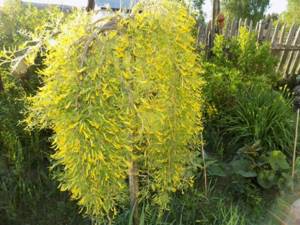
Bush with openwork leaves and golden flowers. It grows actively and has a powerful root system, so the crop is often planted on uneven areas. Caragana can grow up to 2 m; it is better to plant it in well-lit areas or in partial shade.
There are no special requirements for the soil; drought and sub-zero temperatures are also not a problem. The most popular varieties are Globoza, Latifolia, Grandiflor.
Derain

This plant has dense bark. In its natural environment it grows as a small tree or spreading bush. The height of the crop can reach 3 m and the width – 5 m, so it is suitable for creating a high hedge. Flowering is possible twice a season: in May and September. In the fall, small berries will appear after it.
When choosing such shrubs for hedges, this is a good option because... They are unpretentious in care and will take root well in shady and illuminated areas. They prefer humidity. The most famous subspecies are white, scion and red. In addition, even in winter conditions, branches of turf with bright red flowers decorate the summer cottage.
Seed the trench
Once you've decided on the pillars, it's time to think about the soil and seeds. It is recommended to fill the finished trench with peat, humus, or other fertilized soil. Following this recommendation will allow you to get a hedge without bald spots.

Shrubs for hedges - it is best to plant plants in the spring, when the frosts have finally passed. Early autumn is also suitable for this, approximately three weeks before the expected frost. Plants can be planted in any order, but it is better to maintain a distance of 40 cm, or at least 20 cm.

As a rule, berry plants are usually located below, and this is no coincidence: they will harmoniously cover the bare trunks that climbing plants, for example, grapes, may have.
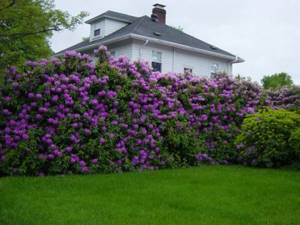
The choice of plants depends solely on the preferences and taste of the owner of the site. However, experts recommend taking into account the climatic conditions of your area when choosing. If a plant is not accustomed to the local climate, then it is better to choose another.
Rules for creating fences with your own hands

First of all, you need to decide what height the hedge should be, what width, shape and composition of plants it should be. It is especially important to find out how compatible the selected crops are: some grow on acidic soil, others on neutral soil, some prefer moisture, for others it can be harmful in large quantities. The same applies to sunlight.
Attention!
Many plants prefer sun, but some areas may be in the shade, so the length of the plants should be different.
After this, you need to draw your hedge on graph paper and put all the plantings on the plan. Then the plan must be applied to the site. Drive pegs along the entire route of the fence to determine its size. After this, you need to dig up the soil and prepare the area for planting - add 3 buckets of rotted manure, 2 buckets of sand and a bucket of leaf soil for every 1 m2.
When digging, you will also need to add phosphorus-potassium fertilizers and wood ash. On land with high acidity, it is necessary to neutralize it with dolomite flour in advance. After this, you need to dig a trench according to the markings. Its depth should be 0.5-0.6 m - this depends on the size of the roots of each crop.
Trimming and trimming hedges

It’s not enough to just make a green hedge in your dacha and leave it to chance. It needs to be looked after - the plantings must be trimmed, leaving a height of 2-3 m. For this work, purchase pruners with large blades and long handles. Only with them can you cut off thick branches. Every year, dried, old and thick shoots are cut off. During the season, work on the formation of bushes is carried out at least 2 times, 10 cm of growth is removed at a time.
Hedge care

A gardener has no more difficulties with hedges than with other crops in his summer cottage. The main care procedures are:
- In the first spring after planting, you need to cut the branches in half. In addition, it is necessary to cut off damaged, diseased or dead wood immediately after the first leaf fall;
- damaged and dead crops must be replaced with new ones in the first season after planting;
- tree trunks should not damage the stems of neighboring crops. It is necessary to ensure that each plant in the hedge grows in comfort;
- in the third season after planting, trees can grow independently, without the use of additional support.
- For the first three years after planting the seedlings, care should be taken to ensure that there are no weeds at a distance of 1 m from the fence. Otherwise, there will be competition for food and moisture. When the bushes grow, they will cope with this problem on their own.
A hedge planted using seedlings will reach adulthood after 3-7 years, depending on the crop. Planting semi-mature seedlings requires special care during planting and watering.
Maintaining the shape of a hedge
Hedge shaping is often limited only by hedge type, size and imagination. This job is quite easy to do, you just need a little practice. The rules for trimming hedges are simple.
Hedge with straight edges
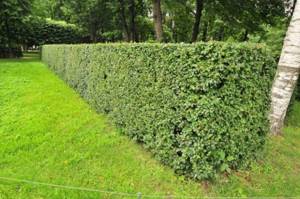
This type of fence is used to define the boundaries of a site. This is the simplest type of hedge. You can cut bushes by eye, stopping from time to time and checking how straight the lines are. For large green fencing, you can drive stakes at both ends and string string between them to create a straight line. It will serve as a guide for cutting - this way the fence will be cut evenly.
Square hedge
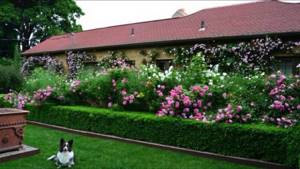
The principles of cutting a square hedge are the same as creating straight lines. You need to use a stretched string between the two stakes to create a flat top. To trim the sides, you can use the same stakes; they need to be placed perfectly straight.
Cone-shaped hedge
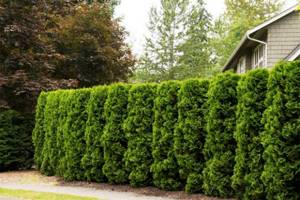
Before you try to shape the cone, you need to outline its appearance and make sure that all areas of the plants are in a sunny area. If you do not follow this rule, then plants that are in the shade will begin to get sick and die.
The widest part will become the base. You can also use stakes and threads to form a slope. They must be gradually moved, increasing the amount cut as they move towards the top.
Round hedge
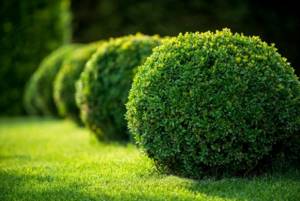
To make a round shape, you need to be careful and use your eye. The hedge trimmer should be held at an angle, moving it from the middle of the bush to the top. Repeat the movement several times to create even sides. Wire mesh can help.
Hedge in the shape of a spiral
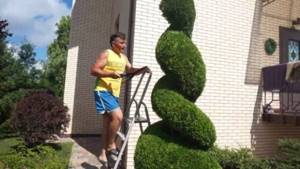
The spiral is the most popular shape and although it looks complicated it isn't, you just have to know what to do. First of all, you need to make sure that the fence has the correct shape. You need to start by giving the bushes a cone shape. Now, using a thread, you need to outline the future spiral. You should work from the base of the plant, cutting it at an angle, removing foliage and giving it a spiral shape.
Hedge of unusual shape

Hedges shaped like animals or abstract shapes look impressive, but they are not that easy to make. The best way to create a custom shaped hedge is to create a metal mesh that will fit perfectly around the hedge or bush.
Hedge trimming tools
In the process of work, you need to use tools that will help create a hedge:
- manual - scissors, pruners and loppers, help in hard-to-reach places, as well as in the final stage, to bring the shape of the hedge to perfection;
- electric and gasoline - motor shears, electric shears, brush cutters, are necessary at the beginning of work, when there is a large volume to be worked on, as well as when working with mature shrubs with thick and dense shoots;
- You will also need additional tools, for example, stakes and threads, metal wire if you want to give it a special shape.
Landing
Plants for a hedge should be chosen based on your preferences regarding the shape, height and purpose of the green fence. Having decided on the type of plants for the hedge, we move on to the most important part, planting.

When planting, choose young shrubs and trees about 4 years old. The crown of the seedlings should be uniform, the roots should not be overdried. This will allow the seedlings to take root in the new location.
Planting is carried out in dry soil in the spring, and frost-resistant plants can be planted in the fall. It is better to choose a place away from buildings. Planting distances must be selected for specific plants.

When choosing coniferous trees, you need to take into account that the pits should be twice as large as the rhizome, and its bottom should be fertilized with compost and silica. After slightly compacting the soil after digging, a small irrigation ridge is formed.
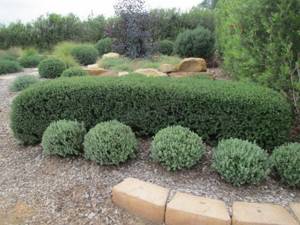
For deciduous trees, it is necessary to wash the roots for several hours and trim long or damaged parts. When digging, you should also fertilize the bottom and sprinkle it with earth. Tall trees need to be strengthened with a stake that will support the tree tied to it.

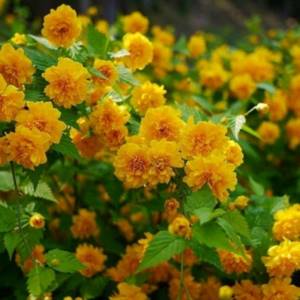
Kerria or Keria: photo and description of the shrub, rules and subtleties of growing a plant with yellow flowers
Ornamental shrubs in landscape design blooming in autumn
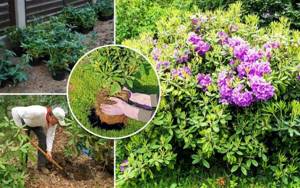
Autumn planting of shrubs: useful tips from experienced gardeners
Medium shrubs are placed in holes and slightly compacted. For larger shrubs, prepare a trench half a meter deep and one meter wide, the bottom of which is mixed with fertilizers and lightly loosened.
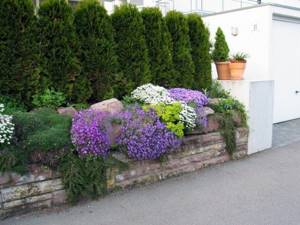
After planting and watering, it is a good idea to sprinkle with peat or sawdust to retain moisture in the soil. Pruning will also help the plants to take root better.

